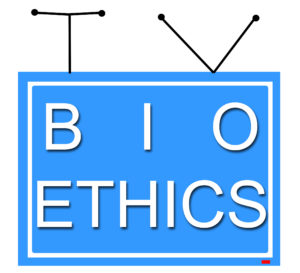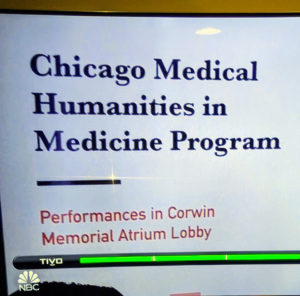by Craig Klugman, Ph.D.
The Good Doctor (Season 3; Episode 2): Ensuring Informed Consen;The Resident (Season 3: Episode 2): Publicity Surgery and Community Benefit; Almost Family (Season 1; Episode 1): Reproductive Fraud; New Amsterdam (Season 2; Episode 2): Death by Neighborhood; Chicago Med (Season 5; Episode 2): Health Humanities 5 seconds of fame
The Good Doctor (Season 3; Episode 2): Ensuring Informed Consent
Josh is a young adult male whose face was destroyed when he defended a woman being assauted on the bus. He has multiple cheek and jaw fractures; a chunk of his face and the underlying muscle was torn off. There is no way to fix the damage except to wire his jaw shut, permanently, forever destroying his ability to speak or eat. In surgery, Andrews says they should wake him up and explain. But Andrews becomes unwilling to follow the standard procedure; he wants to try something new. Murphy comes up with a great idea but it’s never been done: It has a risk of graft failure and sepsis. The patient says yes, but the medical team keeps explaining to him the risk factors of this experimental approach. He sticks with his consent.
 In reality, this was a good example of ensuring the patient understood to what he was consenting. Consent is a process, not a simple “yes” on a form. When doing something risky or experimental, making sure that the patient comprehends and weighs the risks and benefits is essential to protecting autonomy and beneficence. While patients do have the right to make their choices, sometimes they grab onto the excitement of a potential solution and may dismiss the very real risks. These decisions must be made rationally and ensuring that is part of the health care providers’ duties.
In reality, this was a good example of ensuring the patient understood to what he was consenting. Consent is a process, not a simple “yes” on a form. When doing something risky or experimental, making sure that the patient comprehends and weighs the risks and benefits is essential to protecting autonomy and beneficence. While patients do have the right to make their choices, sometimes they grab onto the excitement of a potential solution and may dismiss the very real risks. These decisions must be made rationally and ensuring that is part of the health care providers’ duties.
The Resident (Season 3: Episode 2): Publicity Surgery and Community Benefit
A woman on The Montel show who has adopted 7 foster children suffers from abdominal cancer. She has one slim hope, what is called the Mother of All Surgeries. Twelves hospitals have turned her down, but the new hotshot surgeon (we know who he is because his image is on a giant ad on the hospital building) enters the screen, willing to take it on because it will generate publicity. Voss wants to make sure that the patient knows the chance of success is extremely small and the risk of dying during surgery is high. The patient says, “I will do anything against any odds to stay with my kids as long as I can. I can’t give up.” Voss 3D prints anatomy models to practice and lets the viewer know that the other surgeons are not practicing because they don’t think it’s necessary: She does. After a 17-hour surgery, we see a taping of The Montel show where we learn the patient has not awaken yet (we never hear what happens). This storyline is pulled from a 2016 StatNews article. Some of the dialogue from the show is actually lifted word-for-word from this piece.
In another storyline, Nevins re-opens the shuttered community clinic (without administration permission). An executive from the new hospital owner informs Nevins that she is trespassing. Nevins tells him since they are a non-profit hospital, they are obligated to provide care for those in need. The executive responds that they do that by treating uninsured people in the ER. Nevin retorts that the hospital then goes after those people through collections and docking pay. The executive shares that not only is that legal but it is in alignment with their core value of “fiscal responsibility.” This storyline reflects a recent expose that going after poor patients is exactly what hospitals around the country have been doing. It may be legal but it is unethical to saddle people with debt that they will never be able to pay simply because they are sick. Such a heartless approach is a result of a for-profit health care system instead of a more humane, and less money-focused universal one.
Almost Family (Season 1; Episode 1): Reproductive Fraud
This new show is not a medical drama but is worth noting. The premise is a fertility doctor who used his own sperm (instead of those of the designated male parent) with his patients. The one daughter he raised is stuck cleaning up his mess. She immediately finds two new siblings and suspects that a man she has been intimate with may also be a hidden sibling. The doctor is arrested and asks the daughter to secure a laptop that has all of his secret files. She decides to leave the laptop with the police rather than to clean up one of his messes. The show does not seem to be good and most of the characters have a fatal virtue flaw, but the premise is ripped from the bioethics headlines and might be of interest to some.
New Amsterdam (Season 2; Episode 2): Death by Neighborhood
Continuing this show’s theme of social justice and structural problems in the health care system, this episode opens with Max giving a lecture that mentions how life span can differ by zip code, even within the same city. This statistic is sadly true, reflecting the link between socioeconomic status and availability of educational institutions, hospitals, nutritious food, safety, and more. This may be the pattern for this season—a comment about structural injustice that has little to do with the rest of the episode.
Chicago Med (Season 5; Episode 2): Health Humanities 5 seconds of fame
 The only bioethics or health humanities noteworthy moment in this episode comes in the last few minutes. In a quick cutaway, the viewer sees a banner saying “Chicago Medical Humanities in Medicine Program. Performances in Corwin Memorial Atrium Lobby.” A quick pan to the actors also reveals, “Music is the best medicine” on the sign. I could not find any more information about this deliberate placement. However, many of the exteriors are shot at Rush University Medical Center in Chicago and the rest is shot at Cinespace studio in the city. Rush’s medical school does offer a first-year elective called “Humanities in Medicine”. While the medical center does not have a Corwin Auditorium, it does have an Atrium building. However this sign made its way into the frame, it is nice to see some recognition.
The only bioethics or health humanities noteworthy moment in this episode comes in the last few minutes. In a quick cutaway, the viewer sees a banner saying “Chicago Medical Humanities in Medicine Program. Performances in Corwin Memorial Atrium Lobby.” A quick pan to the actors also reveals, “Music is the best medicine” on the sign. I could not find any more information about this deliberate placement. However, many of the exteriors are shot at Rush University Medical Center in Chicago and the rest is shot at Cinespace studio in the city. Rush’s medical school does offer a first-year elective called “Humanities in Medicine”. While the medical center does not have a Corwin Auditorium, it does have an Atrium building. However this sign made its way into the frame, it is nice to see some recognition.